The producer's guide to the Teletronix LA-2A: "It's one of the few pieces of vintage gear that can have grown producers weeping into their mixes, such is its ‘magic dust’ reputation"
Our in-depth guide to the classic compressor revered by gearheads and beloved for its warmth, colour and transparent sound

The Teletronix LA-2A is one of around half a dozen pieces of vintage studio gear that can have grown producers weeping into their mixes, such is its ‘magic dust’ reputation. This leveling amplifier has been with us for around 60 years, and many engineers swear by it for recording many different sounds or adding ‘just that little something’ to a mix.
However, there are slightly different viewpoints on just why it is so good, with some citing its transparent and natural sound, while others say it adds lovely warmth and colour. The truth is that it can do all of this and more, but one thing most people agree on is that the LA-2A just sounds wonderful.
The LA-2A is a tube compressor that uses optical compression – unlike the more common FET or VCA compressors – which gives the compressor a unique character. It has few controls with attack and release times set, so neither is adjustable. These are both relatively slow, giving a very smooth character and natural-sounding compression which is particularly good on vocals and bass.
You also only get a choice of infinity (limiting) or 3:1 ratio compression set by a single switch on the left. It’s this simplicity and the presence that the compressor adds to a sound – it has enough gain to use it simply as a characterful preamp – that has won it many fans since its development in the late ’50s and early ’60s, and it’s been used to record everyone from Alanis Morissette to Kurt Cobain.
A very brief history of the LA-2A

The LA-2A was initially designed by ex-naval engineer Jim Lawrence. He was working for a radio station in Los Angeles but was in need of a device to control broadcast volume levels which he had to adjust manually. He devised the first-ever optical compressor, one that used light to control the signal level. The theory is that the hotter the input signal, the more light, which is then applied to a light-sensitive resistor to apply compression. The more light, the more resistance, so less signal and more compression.
It sounds easy but Lawrence had to apply knowledge of optical sensors that he’d picked up while working on the Titan Missile Program to produce the first levelling amplifier, the LA-1, in the late 1950s. Lawrence would form the company Teletronix to manufacture it and its successor, the LA-2, was used by some of the biggest broadcasters of the time, including RCA and CBS.

The LA-2A came out in 1962 and, three years later, Lawrence sold his company Teletronix, and it would eventually end up being owned by Bill Putnam, who continued manufacturing the LA-2A under the name UREI. Putnam also owned Universal Audio, which originally manufactured tube-based preamps and compressors. Interestingly, he would also purchase the company National Intertel, which produced yet another studio classic, the 1176 peak limiter.
Want all the hottest music and gear news, reviews, deals, features and more, direct to your inbox? Sign up here.
Eventually – and for speed, we’re missing out some of the more obscure company politics and purchases – Universal Audio was rebooted by Putnam’s sons (Bill Putnam Jr and James Putnam) in 1999 and started manufacturing both the LA-2A and 1176 hardware – plus lots of other high-quality outboard gear – under the UA name.

Software models
Universal Audio then applied this extensive hardware knowledge to software modelling and now, of course, the company makes many of the most highly regarded plugins in music production, including emulations of pretty much every studio processor around, not least the LA-2A. The latest LA-2A Leveller Collection from UAD models three versions of the original hardware: the original LA-2 from the early ’60s, the Jim Lawrence ‘Gray’ LA-2A from the mid-’60s, and the late ’60s UREI ‘Silver’ edition.
The beauty of the LA-2A is that because many of its settings are fixed, you can’t really go wrong
These three versions of the LA-2A are subtly different. Of the three, the Silver edition is more suited as an all-rounder, and with a faster time that can handle transients better, so it’s also more suited to drums and percussion, as well as bass. The medium-speed Gray is less suited to drums but great on vocals, keyboards and guitars. The LA2 is wonderful on keyboards too, and UA has some fantastic ‘before and after’ examples of how much body it can give a piano sound on its YouTube channel.
All three types of LA-2A have enough gain built in to be used as simple preamps to add a lovely, rich tube warmth to tracks and mixes. Their compression character is not harsh, more mellow and characterful. As we’ll see, they add body and presence to a sound, smoothing out the low end, or allowing you to accentuate pick playing or snare sounds, or even adding a touch of grit to guitar sounds.
How to use the LA-2A
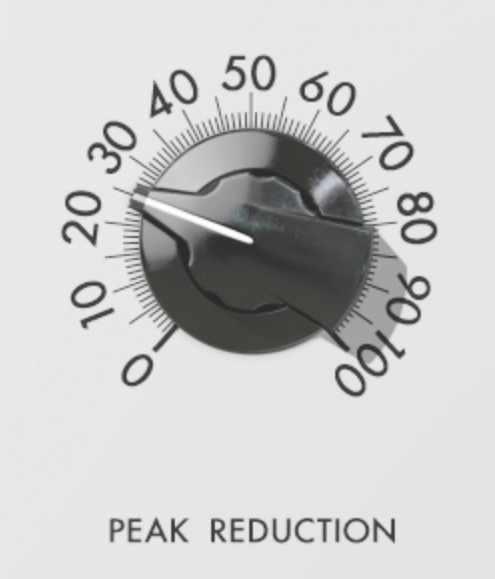
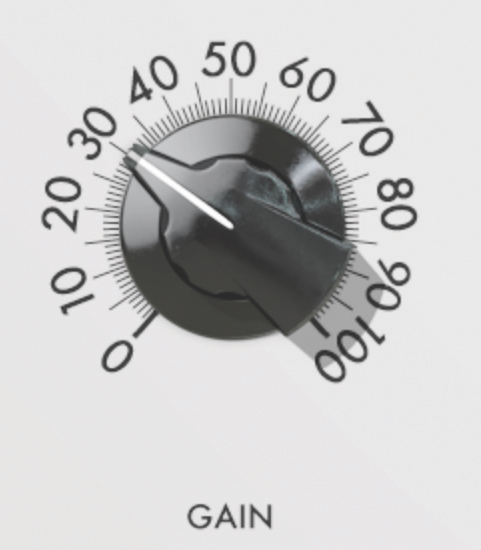
As we see in our examples, the LA-2A has a simple operation. You set the amount of compression with the Peak Reduction knob – the higher you set it, the more compression you get. As you push this right up, you will find that your input signal gradually diminishes and you then use the Gain knob to make up the difference.
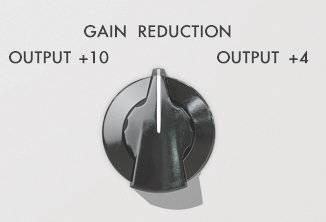
One other switch (above) enables you to view the signal level differently, either +4dB, +10dB or Gain Reduction. As we’re using it in standard compression mode, we leave it set on Gain Reduction for our tutorials.
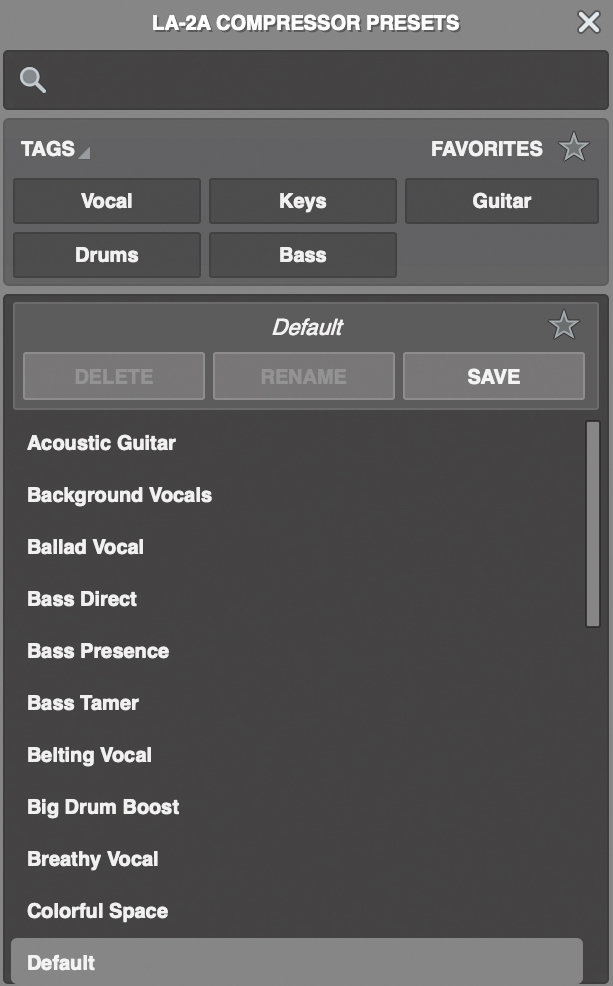
You can use the LA-2A in a number of ways – as we have said, simply running a signal through the plugin and using it as a preamp is one option. Used as a compressor, you can really set it in a couple of ways: to tame peaks or for more dramatic compression where it becomes almost like a gritty or pumping effect.
The beauty of the LA-2A is that because many of its settings are fixed, you can’t really go wrong. In fact, of the many quotes we have seen by famous users, the one overriding thing people say is you can’t make the LA-2A sound bad!
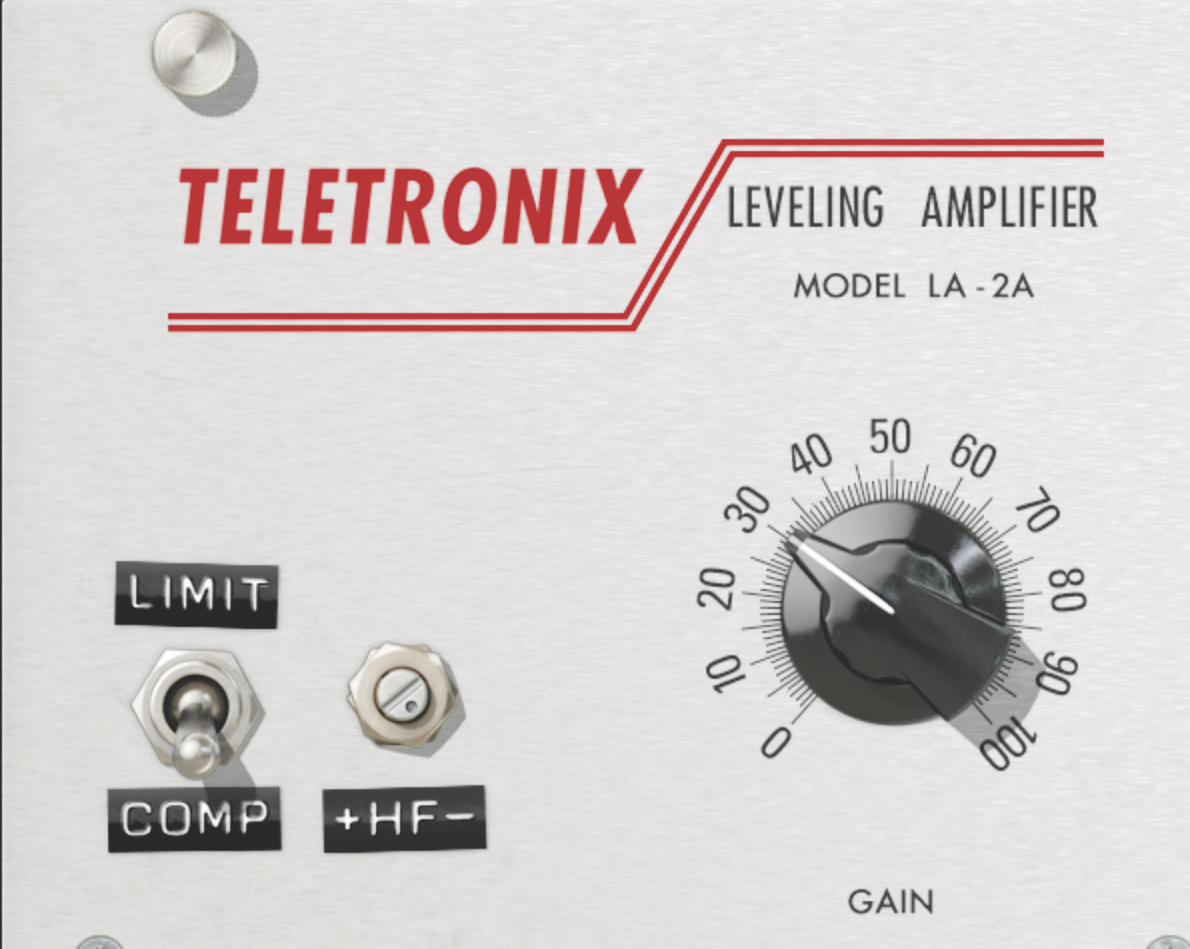
LA-2A tutorial
In the below tutorial, we’ll show a number of LA-2A uses and settings for different instruments and a typical vocal. Really though, the LA-2A is a great plugin just to experiment with on whatever sounds you wish, and when you do, you will soon discover why it’s such a revered piece of studio history.
Quick LA-2A compression tricks to improve your sounds

Let’s use the LA-2A not only to tame wilder drums but also add character. We’ve started by setting the Peak Reduction to around 40 so that the needle moves to a minimum of -7dB and tops out at 0dB. Depending on your drum loop or beats you should notice a levelling of the kick and snare sounds and perhaps a snappier snare, the more you compress everything.
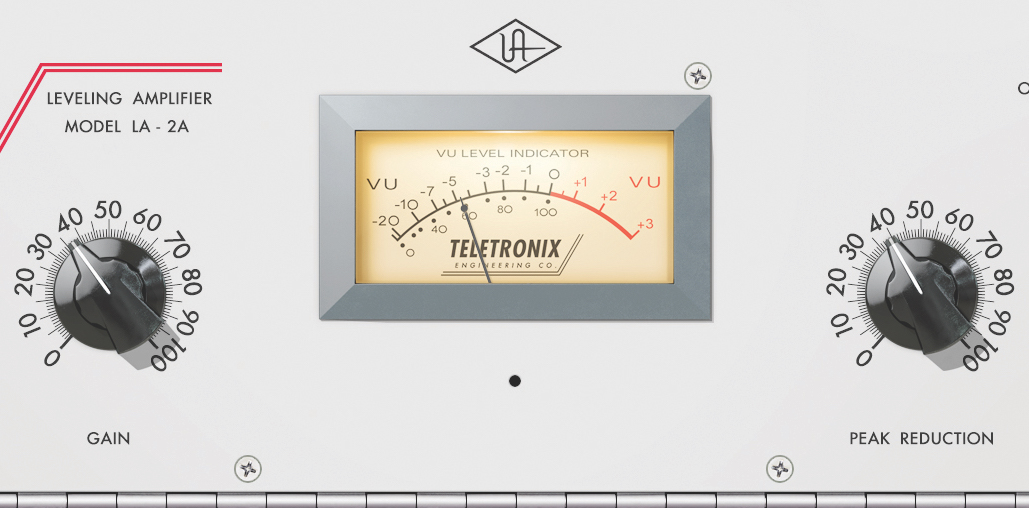
Push the Gain up to around 40 too, and bypass the effect. Now you should hear the entire drum kit is more level – in our case, the percussive elements have been raised to match the kick and snare. There’s also added ambience, character, and a smoother feeling in the lower frequencies. Overall there’s more sheen and polish, and a bigger and fuller sound.
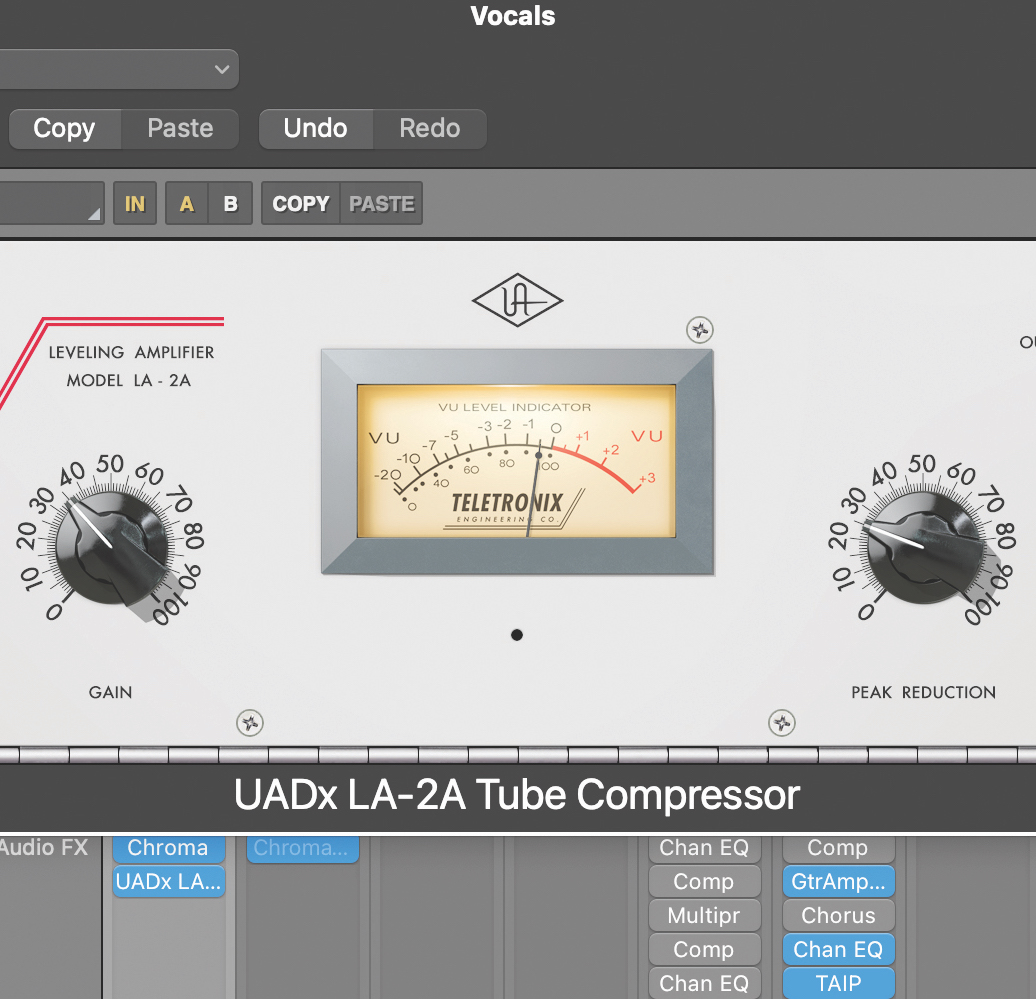
For vocals, you want to set up the LA-2A in one of two ways: to simply control the peaks of a dynamic vocal which is varying substantially. In this case, you only want to tame the peaks, so the needle should only be moving on the louder parts of the vocal, ie when compression is taking place and only going to around -5dB from zero.

If you now increase the compression, you’ll notice the needle slip further to the right as it becomes more compressed during the louder parts. While this can sound boxy and overly squashed on some compressors, if you use the makeup gain it simply sounds more characterful here. Remember what we said about it never sounding bad?
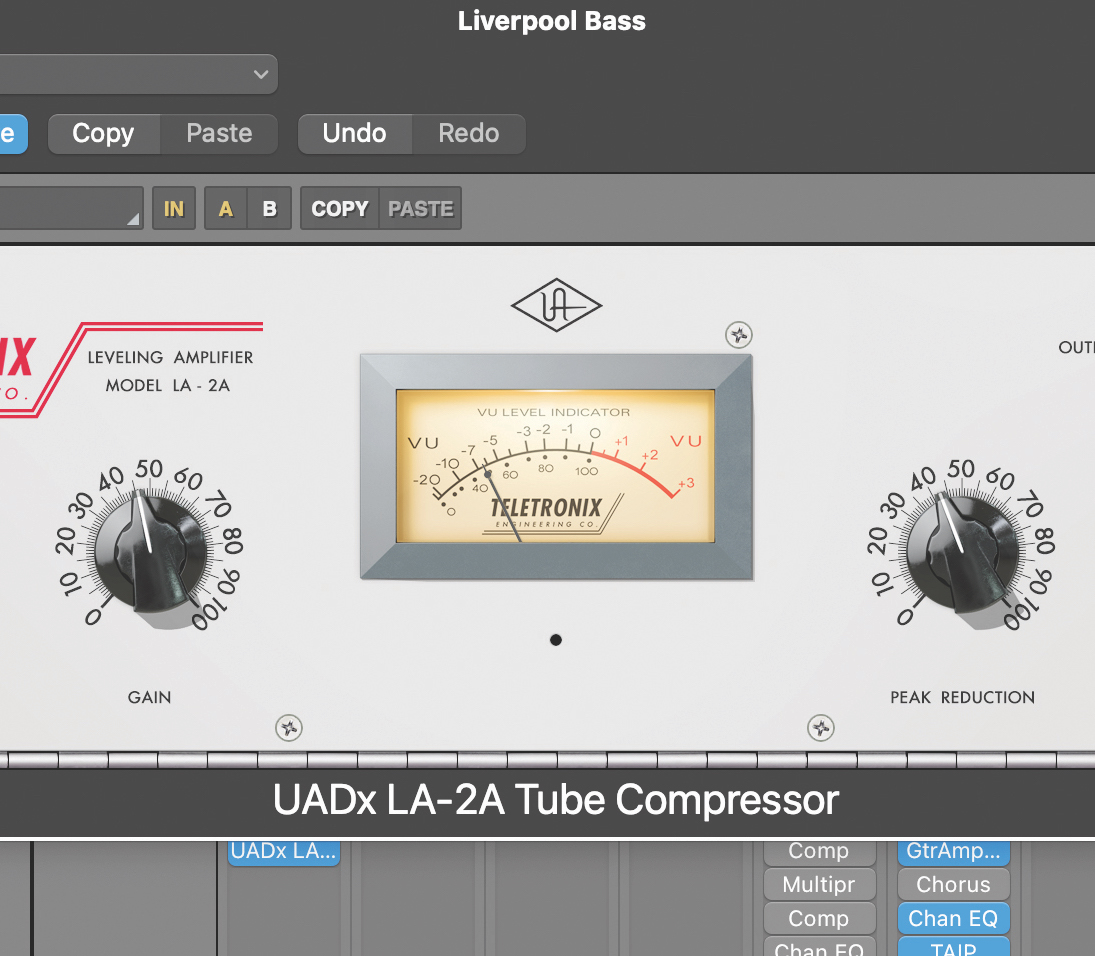
The more rounded bottom end will also apply to bass sounds where, for acoustic bass playing, you should also hear more of the pluck sound as the LA-2A attack time helps accentuate transients. Here we have Peak Reduction set to 40 and Gain to 45, but make sure to experiment.

In our particular mix, it’s the guitar sound that benefits most from the LA-2A, our Sunburst electric jumping out of the mix with both Peak Reduction and Gain set between 30 and 40.


Andy has been writing about music production and technology for 30 years having started out on Music Technology magazine back in 1992. He has edited the magazines Future Music, Keyboard Review, MusicTech and Computer Music, which he helped launch back in 1998. He owns way too many synthesizers.
